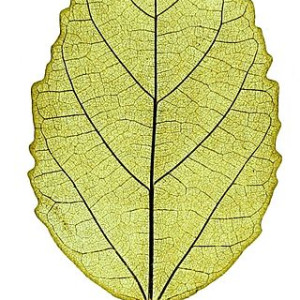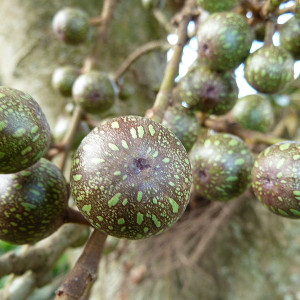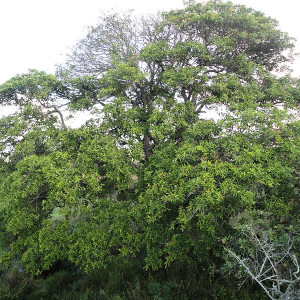This site contains affiliate links for which I may be compensated.
Ficus Sur
Ficus Sur Information
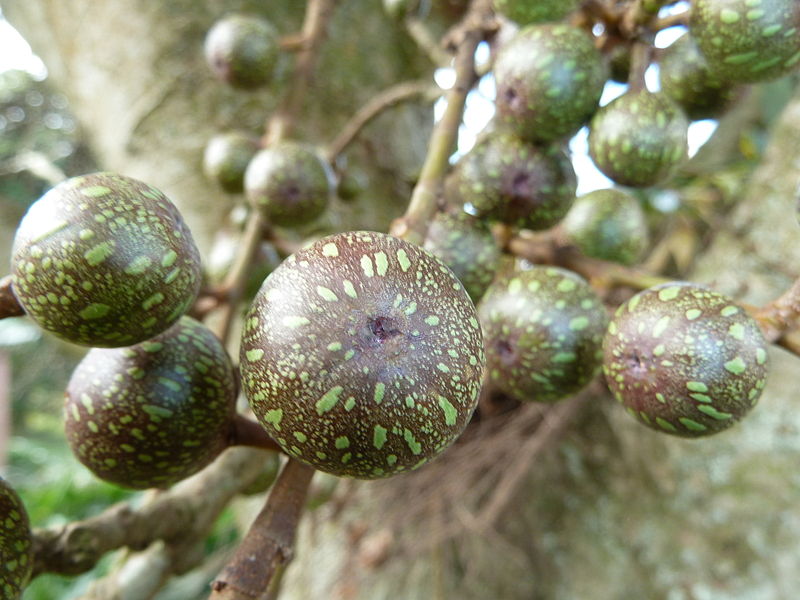

-
Possible Synonyms / AKA:
Cape Fig, Cluster Fig
-
Introduced By:
-
Origin:
Africa -
Main Flavor Group:
-
Family Group:
-
Fig Type:
-
Cold Hardy:
N/A -
Container Variety:
N/A -
Easy Rooting:
N/A -
Main Season:
any -
Availability:
N/A -
Breba Crop:
N/A -
Seed Crunch:
N/A -
Eye:
N/A -
Skin Toughness:
N/A -
Fruit Size:
N/A -
Rain Resistance:
N/A -
Tree Vigor:
N/A -
External Links:
http://apps.kew.org/efloras/namedetail.do?flora=fz&taxon=57&nameid=245
http://pza.sanbi.org/ficus-sur
https://www.google.co.zw/search?hl=en&q=Ficus+sur&tbm=isch#imgrc=sca0WWXPTwAuUM
Description
Ficus sur, is a widespread Afrotropical species of Cauliflorous fig.
Ficus sur is a fast-growing, Deciduous or evergreen tree. It usually grows from 5–12 metres (16–39 FT ) in height, but may attain a height of 35–40 metres (115–131 FT ). Large specimens develop a massive spreading crown, fluted trunks, and buttress roots.
The large, Alternate and spirally arranged leaves are ovate to elliptic with irregularly serrated margins. Fresh foliage is a conspicuous red colour and the papery, 1 cm long stipules are soon dropped. The bark of younger trees is smooth and pale greyish-white in colour, in contrast to the flaky, yellow bark of F. sycomorus. With increasing age the bark becomes darker and rough.
The figs are carried on short or long drooping spurs (or fascicles) which may emerge from surface roots, the trunk or especially from lower main branches. The figs are 2 to 4 cm in diameter and acquire a rosy, speckled exterior when ripe.
The fig seeds are dispersed after passing through the intestinal tracts of birds, bats, and primates.
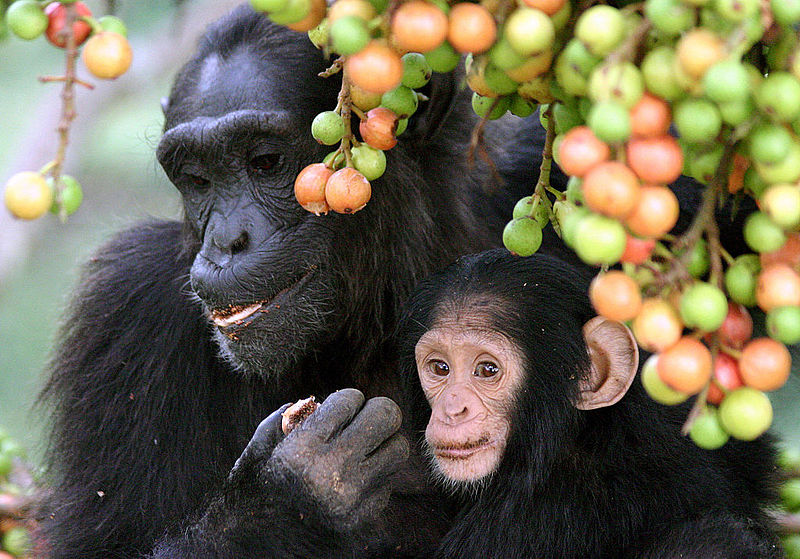
Eastern chimpanzees, feeding on Ficus sur fruit in Kibale National Park, Uganda.
The tree is found from Cape Verde and Senegambia across tropical West Africa to Cameroon and the Central African Republic; eastwards to Eritrea, northern Somalia and Yemen; and southwards through all tropical eastern and southern African countries. It is not found in Lesotho or the dry interior regions of Botswana, Namibia, or South Africa.
It is found in tropical forests and grassy woodlands, and occurs in higher densities within well-watered, temperate upland habitats. It is absent or outnumbered at lower, warmer climates by the similarly Cauliflorous species, Ficus sycomorus. In cooler climates it is a coastal tree, and in warmer interior climates may be found up to 2,500 metres (8,200 FT ) in elevation.
Over its extensive range it is variable with respect to leaf shape, texture of the leaves and figs, deciduousness and overall size.
If you'd like your banner to be shown here and throughout Fig Database, send us a message.
Photos Add Your Image
YouTube Videos
No Videos Found





